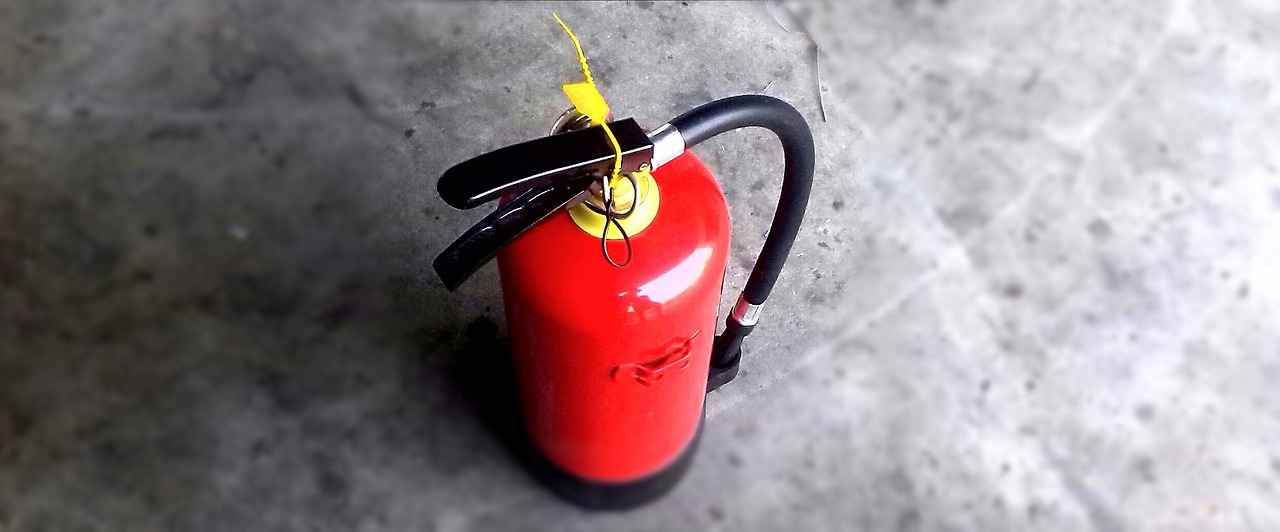How to Determine the Appropriate Number of Fire Extinguishers for Your Company

Fire safety is a key concern for all businesses. In addition to protecting lives, preventing and fighting fires also safeguards assets and ensures business continuity. Fire extinguishers play a crucial role in this context, but how can you determine the appropriate amount of fire extinguishers for your company? This article presents a practical guide to help you make this critical assessment and make informed decisions.
Assessing Fire Risk
Before determining the amount of fire extinguishers necessary, it is essential to assess the risk of fire in your company. Each workplace has its own characteristics that affect fire potential. Consider the following factors:
Type of Activity: The type of activity carried out in the company plays an important role. Industries that deal with flammable products, such as chemicals or gases, have an inherently higher risk.
Area Size: The square footage of the area to be protected is a critical factor. The larger the area, the more extinguishers may be needed to ensure adequate coverage.
Number of Employees: The number of employees at your facility directly influences the risk. More people can mean more potential for fires to ignite.
Storage of Flammable Materials: If the company stores flammable products, such as paper, fabrics or flammable liquids, extra care is required. Storage areas must be equipped with appropriate fire extinguishers.
Electrical Installations: Inadequate or outdated electrical systems can be a significant source of fires. Review the condition of electrical installations in your company.
Fire History: If your company has had fires in the past, this indicates a high risk. Be sure to take into account any prior history.
Compliance with Standards
The next step in determining the quantity of extinguishers is to ensure compliance with fire safety standards and regulations. Regulations vary by location and type of business, but some general guidelines include:
Fire Prevention Code: Many regions follow a fire prevention code that provides detailed guidelines about extinguishers, their location and maintenance.
Type of Fire Extinguishers: The standards also specify the types of fire extinguishers required based on the type of fire that may occur. For example, class A fires (solid materials) require different extinguishers than class B fires (flammable liquids).
Regular Inspections: Be aware of fire extinguisher inspection and maintenance requirements. They should be checked regularly to ensure they work when needed.
Calculation of the Quantity of Fire Extinguishers
To determine the number of extinguishers needed, you can follow a general calculation process:
Area Size: Start by measuring the total area that needs to be protected.
Risk Classification: Based on the risk assessment, classify the area in terms of low, medium or high risk.
Extinguisher Type: Determine the type of extinguisher needed based on the risk classification. For example, a class A fire will require a different extinguisher than a class B fire.
Maximum Coverage Distance: Consult local codes to determine the maximum distance an extinguisher can effectively cover. This will affect the distribution of fire extinguishers.
Calculation of Area per Fire Extinguisher: Divide the total area by the maximum coverage distance of one fire extinguisher to determine the minimum number required.
Rounding and Special Needs: Round the calculated number up to ensure adequate coverage. Additionally, consider special locations that may require additional extinguishers, such as server rooms or especially high-risk areas.
Consider Accessibility: Make sure extinguishers are easily accessible in case of a fire. They must not be obstructed by objects or stored in difficult to access places.
Practical example
Let's consider a practical example. Suppose you manage a medium-sized office, measuring 500 square meters, where 50 employees work. According to its risk assessment, the area is classified as medium risk.
Extinguisher Type: For a medium risk, you would need extinguishers suitable for class A and B fires.
Maximum Coverage Distance: Suppose the local code allows a fire extinguisher to cover up to 50 square meters.
Calculation: Dividing 500 square meters by 50 square meters (maximum coverage distance per extinguisher), we obtain 10 as the minimum number of extinguishers required. However, to ensure complete coverage, we rounded up and installed 12 extinguishers.
Special Needs: Consider installing additional extinguishers in critical areas, such as the kitchen or rooms with sensitive electrical equipment.
Maintenance and Training
Simply installing fire extinguishers is not enough. It's crucial to maintain these devices properly and ensure your staff are trained to use them in the event of an emergency. Some important guidelines include:
Regular Maintenance: Fire extinguishers should be inspected periodically by a qualified technician. These inspections are generally annual, but the frequency may vary depending on local regulations.
Recharges and Testing: Extinguishers may require periodic recharging or testing to ensure they are in perfect working condition. Ensure that these procedures are carried out in accordance with applicable standards.
Staff Training: All company personnel must receive basic training on the use of fire extinguishers. This includes how to operate them correctly and when it is appropriate to do so. Training is essential to avoid panic in fire situations.
Evacuation Plan: In addition to the use of fire extinguishers, it is important to have a well-defined evacuation plan. Make sure your staff knows how to safely evacuate the building in the event of a fire.
Checking the Current Number of Fire Extinguishers
If your company is already in operation and you want to check whether the number of existing extinguishers is adequate, follow these steps:
Risk Assessment: Reassess the risk of fire in your company. If something has changed since the last assessment, such as the expansion of facilities or the introduction of new flammable materials, this may affect the need for additional extinguishers.
Compliance with Current Regulations: Check that your existing extinguishers comply with current regulations. It may be necessary to replace old extinguishers with more modern, effective models.
Maintenance: Make sure existing extinguishers are in good working order. If any extinguisher is damaged or expired, replace it immediately.
Staff Training: Ensure your staff is trained and knows how to use existing extinguishers. Conduct refresher training if necessary.
The determination of the adequate number of fire extinguishers for a company involves careful analysis of fire risk, compliance with local codes, specific calculations, and maintenance and training considerations. It is an essential part of workplace safety and protecting employees and assets.
Remember that fire safety is not a static issue. As your business grows and changes, your fire extinguisher needs may evolve as well. It's important to stay up to date with regulations and periodically review your fire safety strategy to ensure continued protection.
Investing in fire safety is a fundamental step to protecting your company and ensuring peace of mind for everyone involved. Making sure that the number of extinguishers is adequate and that they are in perfect condition is an essential part of this investment. Therefore, assess your risk, follow the rules and be prepared to act in the event of a fire situation. The safety of your company and your team depends on it.





